Looking for the perfect fit? Check out these Best-Selling Barbell.
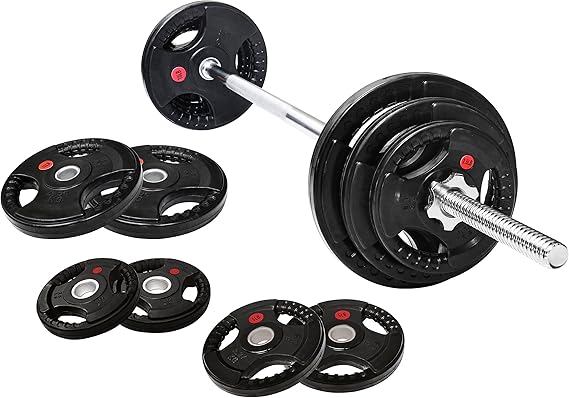
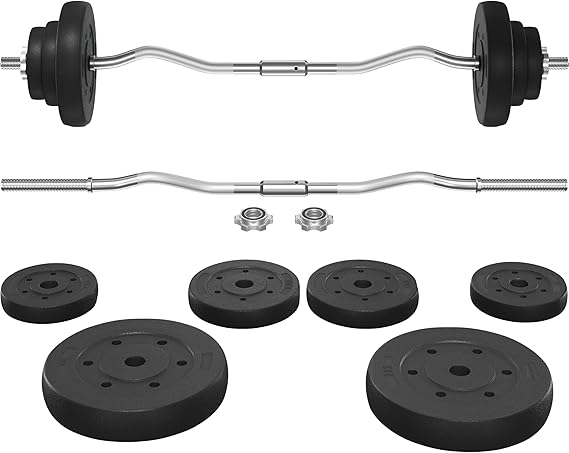
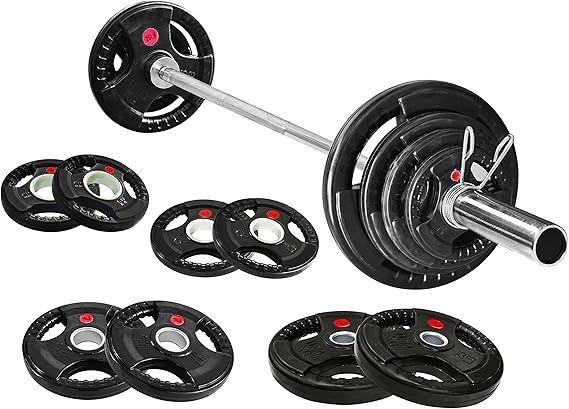
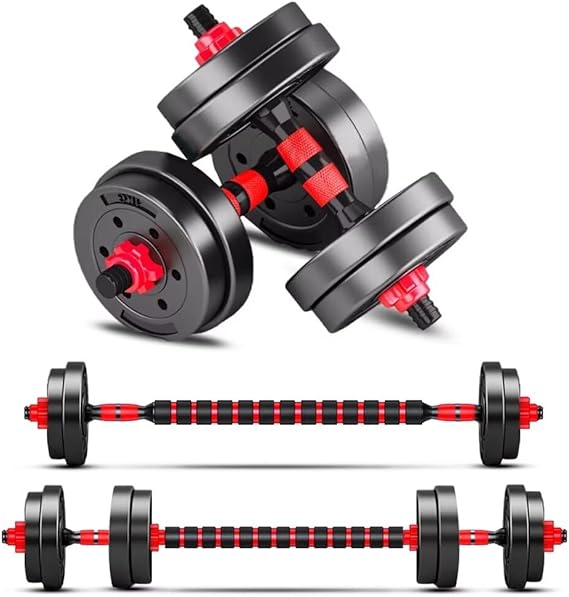
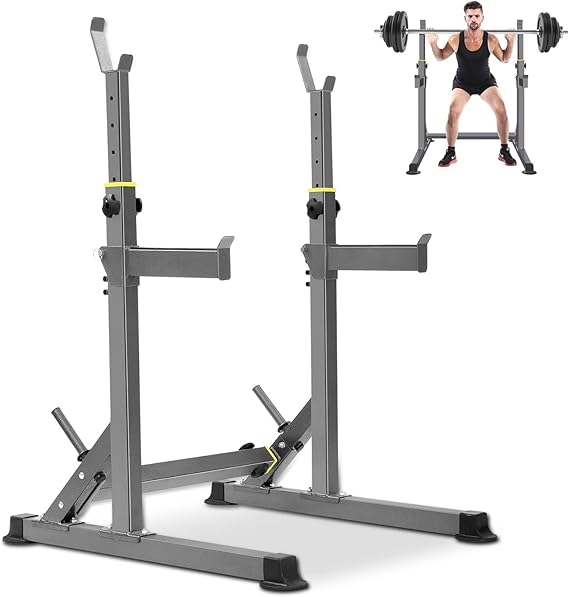
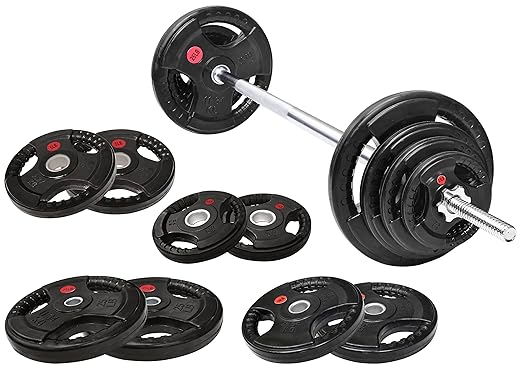
The Ultimate Guide to Barbell Size Chart – Choosing the Right Barbell for Your Training
When it comes to strength training, barbells are essential pieces of equipment. Whether you’re a beginner or a seasoned lifter, selecting the right barbell can make a world of difference in your workout experience and performance. One crucial aspect of choosing a barbell is understanding the different sizes, as they can affect your form, comfort, and lifting capability.
We’ll dive into everything you need to know about barbell sizes and how to choose the best one for your fitness goals. From standard barbells to Olympic barbells, we’ll explore the various types of barbells available, their specifications, and how to determine the best one for your lifting needs.
1. What is a Barbell?
A barbell is a long metal rod used in weightlifting and strength training. It typically features weight plates on either end, which can be added or removed depending on the user’s strength level and workout requirements. Barbells come in various lengths, diameters, and weight capacities, each designed for different types of lifts and exercises.
Types of Barbells
Barbells can be divided into several categories depending on their purpose. The most common types are:
- Standard Barbells: These are the basic barbells used for general weightlifting exercises. They are typically 5-6 feet long and are designed to hold smaller weight plates (usually with a 1-inch hole diameter).
- Olympic Barbells: These are the official barbells used in competitive weightlifting, particularly in the Olympic Games. They have specific standards for length, weight, and diameter. Olympic barbells typically have a 2-inch diameter sleeve (the part where the weight plates are placed).
- Powerlifting Barbells: These barbells are designed specifically for powerlifting and focus on strength training. They are often stiffer than Olympic barbells to reduce flexing during heavy lifts.
- Hex or Trap Barbells: These barbells are designed for exercises like shrugs and deadlifts, featuring a hexagonal or trap-shaped structure that allows users to step into the bar.
- Women’s Barbells: Women’s barbells are typically shorter and lighter than their male counterparts. They often weigh 15 kg (33 lbs) as opposed to the standard 20 kg (44 lbs) for men.
Each type of barbell has specific measurements, so it’s essential to understand the differences before choosing the one that’s right for your training style.
2. Barbell Size Chart
Key Dimensions to Consider
Before diving into specific barbell types, it’s crucial to understand the key measurements you’ll encounter when evaluating barbells. These include the length, diameter, and weight of the barbell, as well as the weight capacity. These factors determine the overall usability and durability of the barbell.
| Barbell Type | Length (inches) | Diameter (inches) | Weight (lbs) | Sleeve Length (inches) | Weight Capacity (lbs) |
|---|---|---|---|---|---|
| Standard Barbell | 5′ 6″ – 6′ 6″ | 1″ | 15 – 25 lbs | 6″ – 8″ | 200 – 300 lbs |
| Olympic Barbell | 7′ | 2″ | 44 lbs (20 kg) | 16″ – 18″ | 700 – 1,000 lbs |
| Women’s Barbell | 6′ 6″ | 1.97″ (50 mm) | 33 lbs (15 kg) | 13″ – 16″ | 400 – 600 lbs |
| Powerlifting Bar | 7′ | 2″ | 44 lbs (20 kg) | 16″ – 18″ | 1,000 – 1,500 lbs |
| Hex/Trap Bar | 7′ | 1.5″ – 2″ | 45 – 60 lbs | 10″ – 12″ | 500 – 800 lbs |
Standard Barbell Size
- Length: Typically ranges between 5′ 6″ to 6′ 6″. Standard barbells are shorter compared to Olympic barbells.
- Diameter: Standard barbells usually have a 1-inch diameter on the shaft.
- Weight: A standard barbell weighs between 15 lbs to 25 lbs.
- Sleeve Length: The sleeve length of standard barbells is often 6″ to 8″.
- Weight Capacity: The weight capacity of standard barbells generally ranges between 200 lbs to 300 lbs, depending on the material and construction.
Standard barbells are ideal for home gyms, casual weightlifters, and beginners. They are compatible with smaller weight plates with 1-inch diameter holes.
Olympic Barbell Size
- Length: The standard length for Olympic barbells is 7 feet.
- Diameter: The shaft diameter is typically 2 inches, while the sleeve (the part where you load the weight plates) has a 2-inch diameter.
- Weight: Olympic barbells are usually 44 lbs (20 kg).
- Sleeve Length: The sleeve length for Olympic barbells is typically between 16″ to 18″, providing ample space for adding weight plates.
- Weight Capacity: Olympic barbells are designed to support heavy weights, with a weight capacity ranging from 700 lbs to 1,000 lbs or more.
Olympic barbells are the preferred choice for most serious weightlifters and those who engage in competitive lifting. They are more durable and able to handle a wider variety of lifting techniques, including Olympic lifts like snatches and clean and jerks.
Women’s Barbell Size
- Length: Women’s barbells are usually about 6′ 6″ long, slightly shorter than the standard Olympic barbell.
- Diameter: The shaft has a diameter of about 1.97 inches (50 mm), which is slightly smaller than the standard Olympic barbell.
- Weight: Women’s barbells typically weigh 33 lbs (15 kg).
- Sleeve Length: Women’s barbells feature sleeves that are between 13″ and 16″ in length.
- Weight Capacity: The weight capacity of women’s barbells typically ranges from 400 lbs to 600 lbs.
Women’s barbells are lighter and shorter, which helps provide better control during exercises. They are great for beginners or female athletes who need a smaller barbell for technique training and general lifting.
Powerlifting Barbell Size
- Length: Powerlifting barbells are 7 feet long, like Olympic barbells.
- Diameter: These barbells also have a 2-inch diameter shaft.
- Weight: Powerlifting bars generally weigh 44 lbs (20 kg), similar to Olympic barbells.
- Sleeve Length: The sleeve length ranges from 16″ to 18″.
- Weight Capacity: Powerlifting bars are designed to handle extreme weights, typically supporting between 1,000 lbs to 1,500 lbs.
Powerlifting barbells are stiffer than Olympic barbells, allowing for minimal flex when lifting heavy loads. They are primarily used in powerlifting competitions, where the focus is on the squat, deadlift, and bench press.
Hex or Trap Bar Size
- Length: The length of a hex bar (or trap bar) is typically 7 feet.
- Diameter: The shaft diameter varies between 1.5″ to 2″.
- Weight: A typical hex bar weighs between 45 lbs to 60 lbs.
- Sleeve Length: The sleeve length is generally between 10″ to 12″.
- Weight Capacity: Hex bars can support anywhere from 500 lbs to 800 lbs.
Hex bars are often used for deadlifts and shrugs, as the design allows for a more upright position while lifting. The neutral grip provided by the hex bar is also easier on the shoulders and back compared to a traditional barbell.
3. Choosing the Right Barbell for Your Needs
Now that you have a better understanding of the different barbell types and their specifications, it’s time to determine which one is best suited for your training needs. Here are some factors to consider when choosing a barbell:
1. Your Training Goals
- Powerlifting: If you are focused on powerlifting, you should opt for a powerlifting barbell or an Olympic barbell. These are designed to handle extreme loads with minimal flex and are suited for heavy squats, deadlifts, and bench presses.
- Olympic Weightlifting: If your focus is on Olympic lifts such as the clean and jerk or snatch, an Olympic barbell will be your best bet due to its specific design for dynamic, explosive movements.
- General Strength Training: For general fitness and strength training, a standard barbell or an Olympic barbell will work well, depending on your available space and the types of lifts you intend to perform.
- Deadlift or Shrug Specific Lifting: If you’re primarily doing deadlifts or shrugs,
a hex or trap bar is ideal, as it provides a more ergonomic grip and position for these lifts.
2. Available Space
Barbells come in various lengths, and you should consider the space available in your gym or home gym. For smaller spaces, a standard barbell may be more convenient, while larger, more dedicated gyms may have space for the Olympic barbell or even multiple types of bars.
3. Weight Capacity
Make sure the barbell you choose can handle the weight you plan on lifting. If you’re just starting out or lifting moderate weights, a standard barbell might be sufficient. However, if you’re lifting heavy loads, you’ll need an Olympic barbell or powerlifting barbell that offers higher weight capacities.
4. Budget
Barbells vary significantly in price. A standard barbell is usually more affordable, while Olympic and powerlifting barbells tend to be more expensive due to their construction and durability. Factor in your budget when deciding which barbell best suits your needs.
Additional Tips:
- Always ensure the barbell sleeves can accommodate your weight plates.
- Consider the grip and knurling of the bar to improve comfort during lifts.
- If you’re unsure about the best barbell for your needs, consult with a fitness professional or visit a local gym to test out different barbells.
With this knowledge, you’re now ready to make an informed choice and take your lifting to the next level. Happy lifting!
Conclusion
Choosing the right barbell for your strength training regimen is an essential decision that can significantly impact your performance and results. By understanding the various barbell sizes, weights, and types available, you can make a more informed decision based on your specific training goals.
Remember, the right barbell can help you achieve better results, enhance your lifting technique, and improve your overall workout experience. Whether you’re lifting at home or in a gym, selecting the appropriate barbell will ensure that you are maximizing your potential in the safest and most effective way possible.






